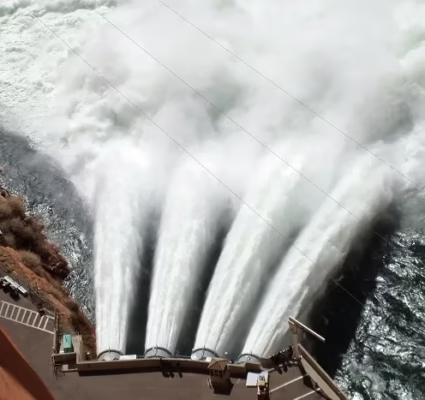
Flow and fluid volume are the only 2 things that control your intake temps, not the chiller!
The chiller simply makes your fluid cold, you could make your fluid cold any number of ways, ice, chiller, superman, whatever some how it got cold.
The faster the fluid flows the higher the energy exchange inside your heat exchanger or chiller (the colder it gets)
The slower the fluid flows the higher the energy exchange inside your intercoolers (the hotter it gets)
(Under both circumstances you want the fluid to be flowing as fast as possible).
Under wide open throttle, think of it like this:
When you go out to dinner there is a candle on the table, you run your finger through it fast and you do not get burnt.
You do it slowly and you burn your finger.
The same applies to the intercooler fluid in the intercooler.
When in boost you have 200-300f degree air hitting the intercooler, if your fluid passes through slowly the fluid is heated up, the surface temp of the intercooler is heated up and so are the intake temps.
If the fluid passes through quickly (just like your finger) the fluid isn’t exposed to the heat for very long so the fluid doesn’t change much in temperature, as new cold fresh fluid rushes in behind it the process repeats, and you are resisting the change in temperature. Basically, you are fighting the heat by flooding the brick with more fluid, a battle of hot Vs cold is going down.
This results in the intercooler brick having a colder surface temperature and colder intake temps.
This is why we have completed a whole bunch of intercooler pump flow tests and determined what works and what doesn’t work.
There are only 4 pumps on the planet that are worth fitting to any car with a water to air intercooler, they are:
#1 CWA400 or EMP29/32
#2 CWA100 or CWA150
The CWA400 and EMP29/32 basically flow the same and are top of the line. (Can be more difficult to mount, but we make it a lot easier with our pump mounting bracket options)
The CWA100 and CWA150 flow the same, however the CWA150 has a higher amperage draw. (easy to mount)
Pump flow rates with our interchiller on an LSA intercooler system:
(Test conditions, 3/4″ hose, 12AN fittings on the tank, pump, chiller, LSA intercooler brick)
CTSV Bosch PCA 3.94 GPM (14.95L per min)
Meziere 20GPM Pump 4.01 GPM (15.2L per min)
Meziere 55GPM Pump 4.01 GPM (15.2L per min)
OEM ZL1: 5.91 GPM (22.4L per min)
Varimax 5.91 GPM (22.4L per min)
Davies Craig EWP150 5.95 GMP (22.52L per min)
OEM ZR1 6.25 GPM (23.68L per min)
CWA100 8.4 GPM (31.79L per min)
CWA150 8.4 GPM (31.79L per min)
CWA400 11.01 GMP (41.7L per min)
EMP WP 29/32 reprogrammed 11.06 GMP (41.9L per min)
CWA400 is 178.9% faster than Bosch
CWA100 is 112.6% faster than Bosch
Whilst these flow tests may not be on your model car/intercooler they are all relative to one another showing a typical setup that most people use.
If hoses sizes are increased all pumps will flow more, but the ranking of the pumps would remain unchanged, same if the intercooler was higher flowing again the ranking would remain unchanged. The EMP is 0.47% better than the CWA400 however the EMP is more expensive, out of stock often, and your cannot rotate “clock” the cover plate so you are limited to wherever the water ports are facing if you like that location or not you are stuck with it. Where as with the CWA400 you can rotate “clock” the cover plate to any location desired making the water ports face where ever you need them to face.
Reservoir tanks:
Without a reservoir for additional fluid volume, your entire fluid mass does a lap of the system roughly every 2sec this means you start reheating your fluid over and over, when you add a reservoir you might add 30-60sec worth of fluid volume and now you have a stable fluid temp the entire time you are under wide open throttle. Combined flow rate and fluid volume are the only 2 things controlling temperature.
